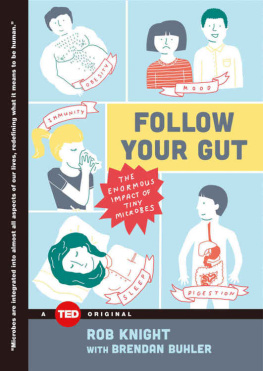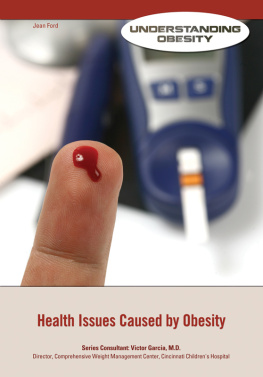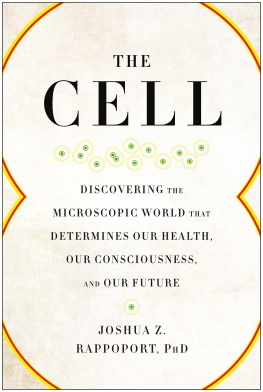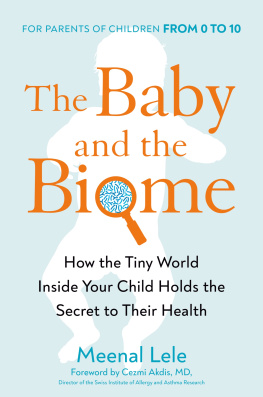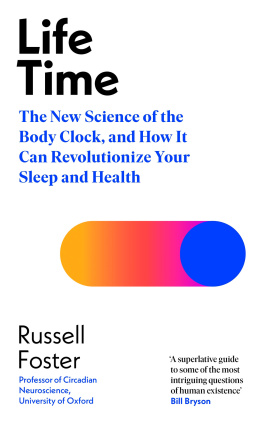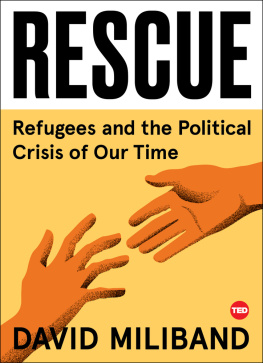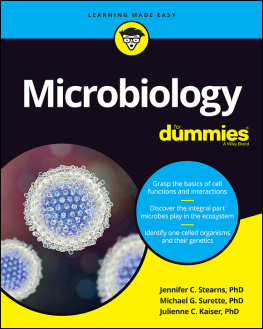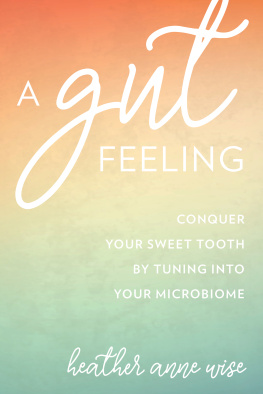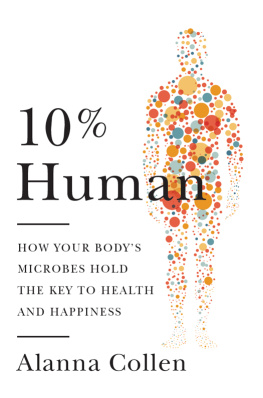Thank you for downloading this TED Books eBook.
Join our mailing list and get updates on new releases, deals, bonus content and other great books from TED Books and Simon & Schuster. CLICK HERE TO SIGN UP or visit us online to sign up at
eBookNews.SimonandSchuster.com

CONTENTS
To my parents, Allison and John, for their genes, ideas, and microbes.
INTRODUCTION
You, we know: human, bipedal, noble in reason, infinite in faculties, heir to all creation, has never read a single end-user license agreementjust checks the box. Now meet the rest of you: the trillions of tiny creatures living in your eyes, your ears, and inside the magnificent mansion that is your gut. This microscopic world within our bodies holds the potential to redefine how we understand disease, our health, and ourselves.
Thanks to new technologies, many of them developed only within the past few years, scientists today know more about the microscopic life-forms inside us than ever before. And what were learning astonishes. These single-celled organismsmicrobesare not only more numerous than we thought, inhabiting in enormous numbers almost every nook and cranny of the body, but theyre also more important than we ever imagined, playing a role in nearly all aspects of our health, even in our personality.
The collection of microscopic critters that make their home in and on us is called the human microbiota, and their genes are called the human microbiome. And like many scientific breakthroughs, the emerging facts about this tiny world serve as a rebuke to our egos. Astronomy has told us that our planet was not the center of the universe, and evolution says humans are merely one animal among many. The charting of the human microbiome teaches us that even within our own bodies, were drowned out by a chorus of independent (and inter dependent) life-forms with their own goals and agendas.

Just how many microbes are there within us? You are made up of about ten trillion human cellsbut there are about a hundred trillion microbial cells in and on your body. Which means: you are mostly not you.
But we are not, as we have thought, merely the unlucky hosts to the occasional bad bug that gives us an infection. In fact, we live in balance with a whole community of microbes all the time. Far from being inert passengers, these little organisms play essential roles in the most fundamental processes of our lives, including digestion, immune responses, and even behavior.
Our inner community of microbes is actually more like a collection of different communities. Different sets of species inhabit different parts of the body, where they play specialized roles. The microbes that live in your mouth are distinct from those residing on your skin or in your gut. We are not individuals; we are ecosystems.
Our diversity of microbes can even help explain certain corporeal quirks that weve long just chalked up to luck, good or bad. For instance, why do some of us seem to taste better to mosquitoes? The little fiends seldom bite me, but my partner, Amanda, attracts them in swarms. It turns out that some of us really are more appetizing to mosquitoes than others. And one important reason for our variable delectability is the different microbial communities we harbor on our skin. (More on this in chapter 1.)
And it doesnt end there: there is extraordinary variation in the microbes that live in and on each of us. Youve probably heard that were all pretty much the same in terms of our human DNA: that, in terms of your human DNA, youre 99.99 percent identical to the person sitting next to you. But thats not true of your gut microbes. You might only share 10 percent with the person next to you.
These differences may account for an enormous range of variations between us, from weight to allergies; from our likelihood of getting sick to our level of anxiety. We are only just beginning to mapand to understandthis vast microscopic world, but the implications of our findings are stunning.
The incredible diversity of the microbial world is made all the more mind-blowing by the fact that, until about forty years ago, we had no idea just how many single-celled organisms there were, or how many kinds. Until then, our basic ideas about categorizing the worlds living things came from Charles Darwins On the Origin of Species , published in 1859. Darwin sketched out an evolutionary tree that grouped all living things by their shared physical traitsshort-beaked finches, long-beaked finches, and the likeand that became our basis for sorting species.
This traditional picture of life was based on what people could see in the world around them or through microscopes: larger living things were classified as plants, animals, and fungi. The remaining single-celled organisms were lumped into two basic categories: protists and bacteria. We were right about the plants, animals, and fungi. But our picture of single-celled organisms was completely wrong.
In 1977, American microbiologists Carl Woese and George E. Fox mapped the tree of life by comparing life-forms at the cellular level, using ribosomal RNA, a relative of DNA thats housed in every cell and used in making proteins. The result was startling. Woese and Fox revealed that single-celled organisms are more diverse than all of the plants and animals combined. As it turns out, animals, plants, and fungi; every human, jellyfish, and dung beetle; every strand of kelp, patch of moss, and soaring redwood; and every lichen and mushroomall the life we can see with our eyesamount to three short twigs at the end of one branch on the tree of life. The single-celled organismsbacteria, archaea (which were discovered by Woese and Fox), yeasts, and othersdominate.

In just the last few years, weve taken amazing leaps forward in our understanding of the microscopic life within us. New techniquesincluding improvements in DNA sequencingcombined with an explosion of computing power, have been key here. Now, through a process called next-generation sequencing, we can collect cell samples from different parts of the body, rapidly analyze the microbial DNA they contain, and combine information from samples across the body to identify the thousands of species of microbes that call us home. Were finding bacteria, archaea, yeasts, and other single-celled organisms (such as eukaryotes) that collectively have genomesthe genetic recipes that define themlonger than our own.
New computer algorithms, in turn, are making it much easier to interpret all this genetic information. Specifically, we can now create a map of our microbes to compare communities in different parts of the body, and to compare different peoples communities to one another. Much of our growing knowledge comes from the Human Microbiome Project. The $170 million research effort, sponsored by the US National Institutes of Health (NIH), has supported more than two hundred scientists who, so far, have analyzed at least 4.5 terabytesthats 4.5 trillion bytesof DNA data. And this is only a start; other international efforts, like MetaHIT (a European consortium), are adding and analyzing more data all the time.
The cost of this analysis is dropping quickly, enabling many more individuals to obtain a census of the diverse life within them. About a decade ago, if you wanted to know what made up your microbiome, youd need $100 million. Now obtaining that same information costs about $100so cheap that it might soon become a routine medical procedure ordered by your doctor.
Next page
